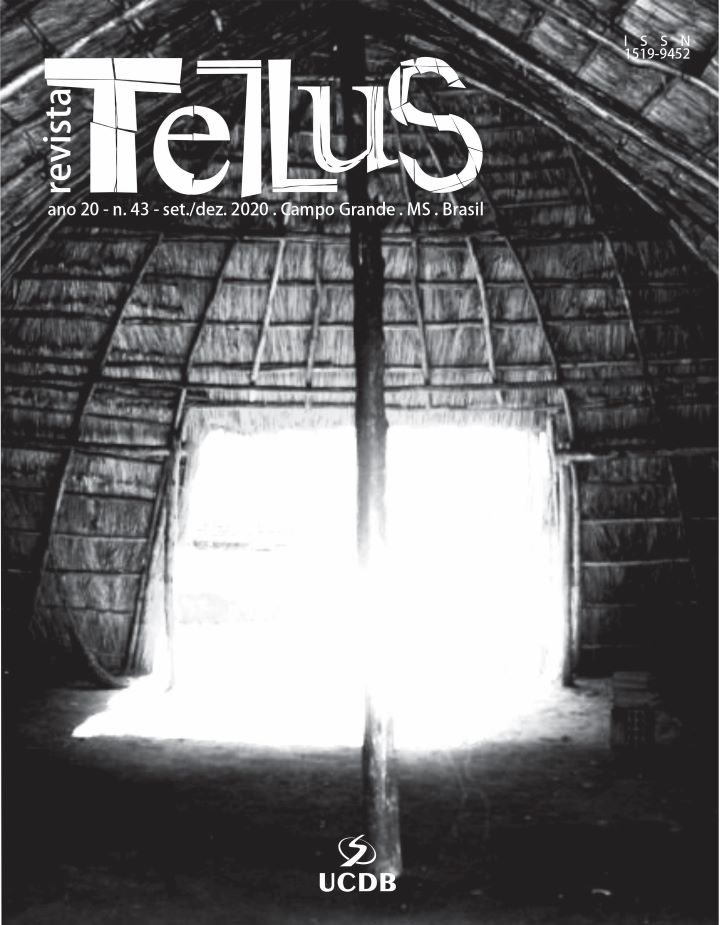A A framework for designing pedagogical materials in Indigenous languages: examples from Brazil and Mexico
DOI:
https://doi.org/10.20435/tellus.v20i43.702Palabras clave:
pedagogical materials, indigenous languages, language revitalization and maintenanceResumen
Many language revitalization programs in Latin America rely heavily on instructional settings that require some sort of pedagogical materials. One of the primary challenges for such programs is to produce these materials and incorporate them into consistent practices. This paper presents a framework that can be used to assess the needs and justify the design choices for books, dictionaries, grammars and multimedia products to be incorporated into indigenous language revitalization programs. The examples used to illustrate the deployment of such framework come from two projects, one in Brazil and one in Mexico, to prepare pedagogical grammars in multiple indigenous languages.
Citas
AMARAL, Luiz. Estratégias para a revitalização de línguas ameaçadas e a realidade brasileira. Cadernos de Linguística, Campinas, v. 1, n. 3, p. 1-49, 2020.
AMARAL, Luiz. Bilinguismo, Aquisição e letramento e o ensino de múltiplas línguas em escolas indígenas no Brasil. Cadernos de Educação Escolar Indígena, Barra dos Bugres, v. 9, n. 1, p. 12-32, 2011.
AMARAL, Luiz; GOMES, Ana Maria; AUTUORI, Joana; MARTINS, Moreno Saraiva. Diálogos entre a linguística, a educação e a antropologia na produção de materiais de alfabetização na língua sanöma. Revista Linguística, Rio de Janeiro, v. 13, n. 1, p. 5-26, 2017.
AMARAL, Luiz; MEURERS, Detmar. Conceptualizing Student Models for ICALL. In: CONATI, Cristina; MCCOY, Katheleen (Org.). User Modeling 2007: proceedings of the Eleventh International Conference. Lecture Notes in Computer Science. Wien, New York, Berlin: Springer, 2007.
BROWNE, Charles; WADA, Minoru. Current Issues in High School English Teaching in Japan: an exploratory survey. Language, Culture and Curriculum, v. 11, n. 1, p. 97-112, 2010.
ELLIS, Rod. Task-based Language Learning and Teaching. Oxford, UK: Oxford University Press, 2003.
FOTOS, Sandra. Traditional and Grammar Translation Methods for Second Language Teaching. In: HINKEL, Eli (Org.). Handbook of Research in Second Language Teaching and Learning. Mahwah, NJ: Lawrence Erlbaum Associates, 2005. p. 593-712.
HEIFT, Trude. Inspectable learner reports for web-based language learning. ReCALL, Cambridge, v. 16, n. 2, p. 416-31, 2004.
KNOP, Sabine; RYCKER, Teun. Cognitive Approaches to Pedagogical Grammar. Berlin: Mouton de Gruyter, 2008.
LIMA, Suzy. The Kawaiweté pedagogical grammar: linguistic theory, collaborative language documentation, and the production of pedagogical materials. Language Documentation & Conservation, v. 20, p. 54-72, 2020.
LONG, Michael; ROBINSON, Peter. Focus on Form: theory, research and practice. In: DOUGHTY, Catherine; WILLIAMS, Jessica (Org.). Focus on Form in classroom second language acquisition. Second Language Acquisition: critical concepts in linguistics. Cambridge, UK: Cambridge University Press, 1998. p. 15-44.
MANDEL MORROW, Lesley; GAMBRELL, Linda; PRESSLEY, Michael (Org.). Best Practices in Literacy Instruction. New York, NY: The Guilford Press, 2003.
MICHAUD, Lisa N.; MCCOY, Kathleen F. Empirical Derivation of a Sequence of User Stereotypes for Language Learning. User Modeling and User-Adapted Interaction, v. 14, p. 317-50, 2004.
MORAES DA SILVA, Maria Nazaré. Paraketêjê Língua de Herança: minha língua ensinada do jeito que eu quero. 2019. 278 f. Ph.D. Dissertation – Universidade Federal do Pará, Belém, PA, Brazil, 2019.
NASCIMENTO, Adir Casaro; URQUIZA, A. H. Aguilara. Currículo, diferenças e identidades: tendências da escola indígena Guarani e Kaiowá. Currículo Sem Fronteiras, v. 10, n. 1, p. 113-32, 2010.
NEWBY, David. Pedagogical grammar: a cognitive+ communicative approach. In: DELANOY, W.; VOLKMANN, L. (Org.). Future Perspectives for English language teaching. Heidelberg: Winter, 2008. p. 29-41.
ODLIN, Terence. Perpectives on Pedagogical Grammars. Cambridge, UK: Cambridge University Press, 1994.
OLIVEIRA DA SILVA, Cristiane; AMARAL, Luiz; MAIA, Marcus. Palavras-BO em Karajá: como transmutar análises linguísticas formais em material pedagógico. Cadernos de Educação Escolar Indígena, Barra dos Bugres, v. 11, n. 1, p. 69-86, 2014.
PEREIRA, Verônica Mendes; GOMES, Ana Maria Rabelo. A produção e a circulação da cultura pelas fronteiras da escola indígena Xakriabá. Revista Brasileira de Educação, Rio de Janeiro, v. 24, p. e240027, 2019.
PEREZ BAEZ, Gabriela; VOGEL, Rachel; PATOLO, Uia. Global survey of revitalization efforts: a mixed methods approach to understanding language revitalization practices. Language Documentation & Conservation, v. 13, p. 446-513, 2019.
RICHARDS, Jack; RODGERS, Theodore. Approaches and Methods in Language Teaching. Cambridge, UK: Cambridge University Press, 2001.
ROCKWELL, Elsie; GOMES, Ana Maria R. Introduction to the Special Issue: Rethinking Indigenous Education from a Latin American Perspective. Anthropology & Education Quarterly, v. 40, n. 2, p. 97-109, 2009.
SHARWOOD SMITH, Michael. Input Enhancement in instructed SLA: theoretical bases. Studies in Second Language Acquisition, v. 15, p. 165-79, 1993.
SWAIN, Marrill. The output hypothesis: theory and research. In: HINKEL, E. (Org.). Handbook on research in second language learning and teaching. Mahwah, NJ: Lawrence Elrbaum Associates, 2005.
SWAN, Michael. Design criteria for pedagogic grammar rules. In: BYGATE, Martin; TONKYN, Alan; WILLIAMS, Eddie (Org.). Grammar and the second language classroom. Cliffs, NJ: Prentice-Hall, 1992.
VANPATTEN, Bill. Input Processing in Adult Second Language Acquisition. In: VANPATTEN, Bill; WILLIAMS, Jessica (Org.). Theories in Second Language Acquisition. Mahwah, NJ: Routledge, 2007. p. 115-136.
Descargas
Publicado
Cómo citar
Número
Sección
Licencia
Todos os artigos publicados na Revista Tellus estão disponíveis online e para livre acesso dos leitores, tem licença Creative Commons, de atribuição, uso não comercial e compartilhamento pela mesma. Direitos Autorais para artigos publicados nesta revista são do autor, com direitos de primeira publicação para a revista. Em virtude de aparecerem nesta revista de acesso público, os artigos são de uso gratuito, com atribuições próprias, em aplicações educacionais e não-comerciais.


